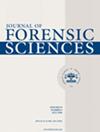False negative ELISA screen for benzoylecgonine in blood using the Neogen® assay
IF 1.5
4区 医学
Q2 MEDICINE, LEGAL
引用次数: 0
Abstract
Enzyme-linked immunosorbent assay (ELISA) is a common analytical tool for screening samples in forensic toxicology laboratories, but it can be susceptible to interferences. The analysis of paired blood and oral fluid samples from the same subject led to the identification of a false negative ELISA screen for benzoylecgonine (BE) in blood. Investigation demonstrated that the issue was only with the Neogen® BE assay, and sample dilution did not remedy the problem. Based on subsequent monitoring of ELISA screens in blood, the false negative anomaly has only been identified in one specimen, and the cause remains undetermined.
使用 Neogen® 检测法对血液中的苯甲酰可待因进行假阴性 ELISA 筛查。
酶联免疫吸附试验(ELISA)是法医毒理学实验室筛选样品的常用分析工具,但它可能容易受到干扰。对同一受试者的配对血液和口服液样本进行分析,发现血液中苯甲酰茶碱(BE)的ELISA筛查结果为假阴性。调查表明,该问题仅与Neogen®BE测定有关,样品稀释并不能解决问题。根据随后对血液中ELISA筛查的监测,只在一个标本中发现了假阴性异常,原因仍未确定。
本文章由计算机程序翻译,如有差异,请以英文原文为准。
求助全文
约1分钟内获得全文
求助全文
来源期刊

Journal of forensic sciences
医学-医学:法
CiteScore
4.00
自引率
12.50%
发文量
215
审稿时长
2 months
期刊介绍:
The Journal of Forensic Sciences (JFS) is the official publication of the American Academy of Forensic Sciences (AAFS). It is devoted to the publication of original investigations, observations, scholarly inquiries and reviews in various branches of the forensic sciences. These include anthropology, criminalistics, digital and multimedia sciences, engineering and applied sciences, pathology/biology, psychiatry and behavioral science, jurisprudence, odontology, questioned documents, and toxicology. Similar submissions dealing with forensic aspects of other sciences and the social sciences are also accepted, as are submissions dealing with scientifically sound emerging science disciplines. The content and/or views expressed in the JFS are not necessarily those of the AAFS, the JFS Editorial Board, the organizations with which authors are affiliated, or the publisher of JFS. All manuscript submissions are double-blind peer-reviewed.
 求助内容:
求助内容: 应助结果提醒方式:
应助结果提醒方式:


